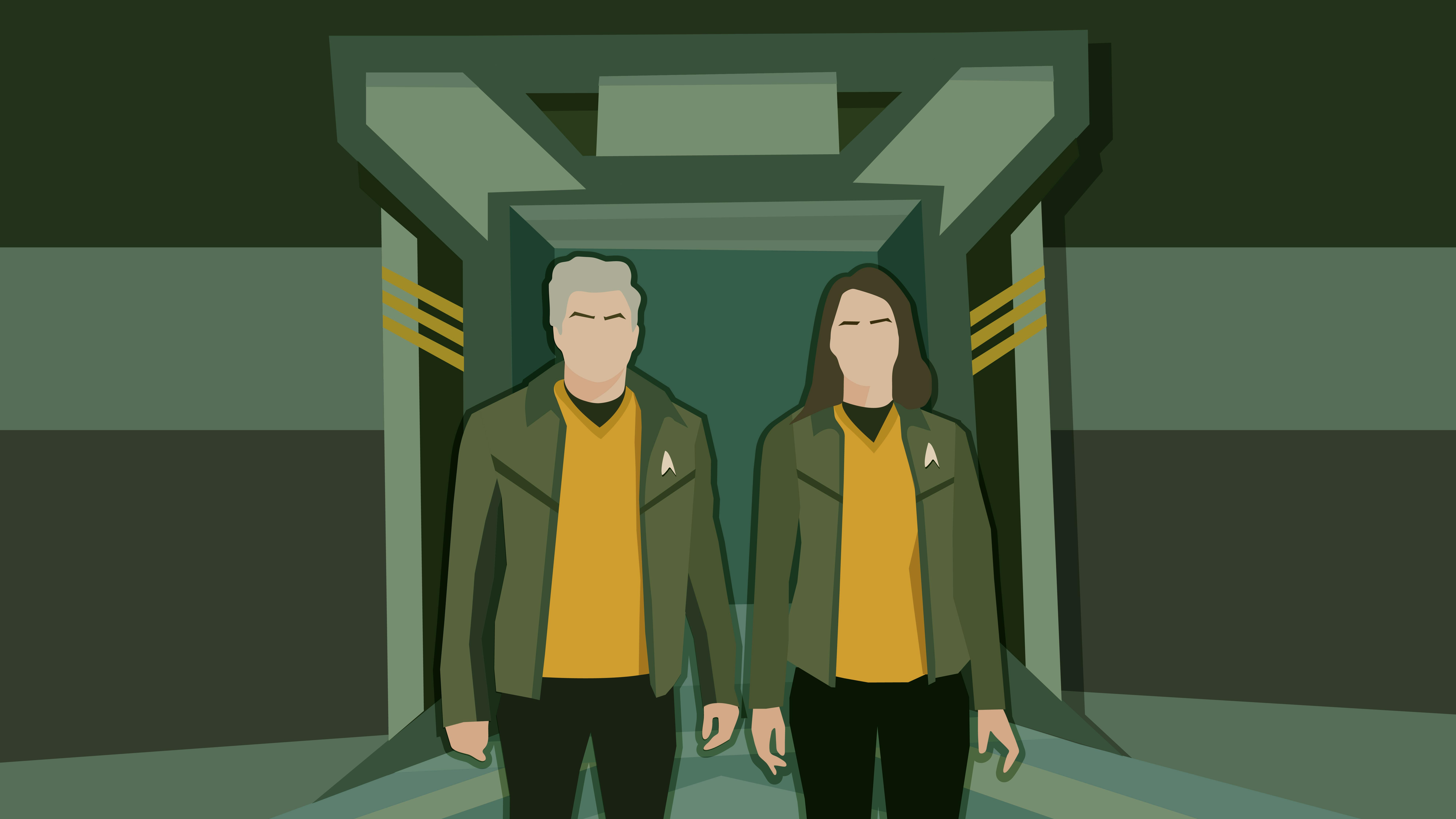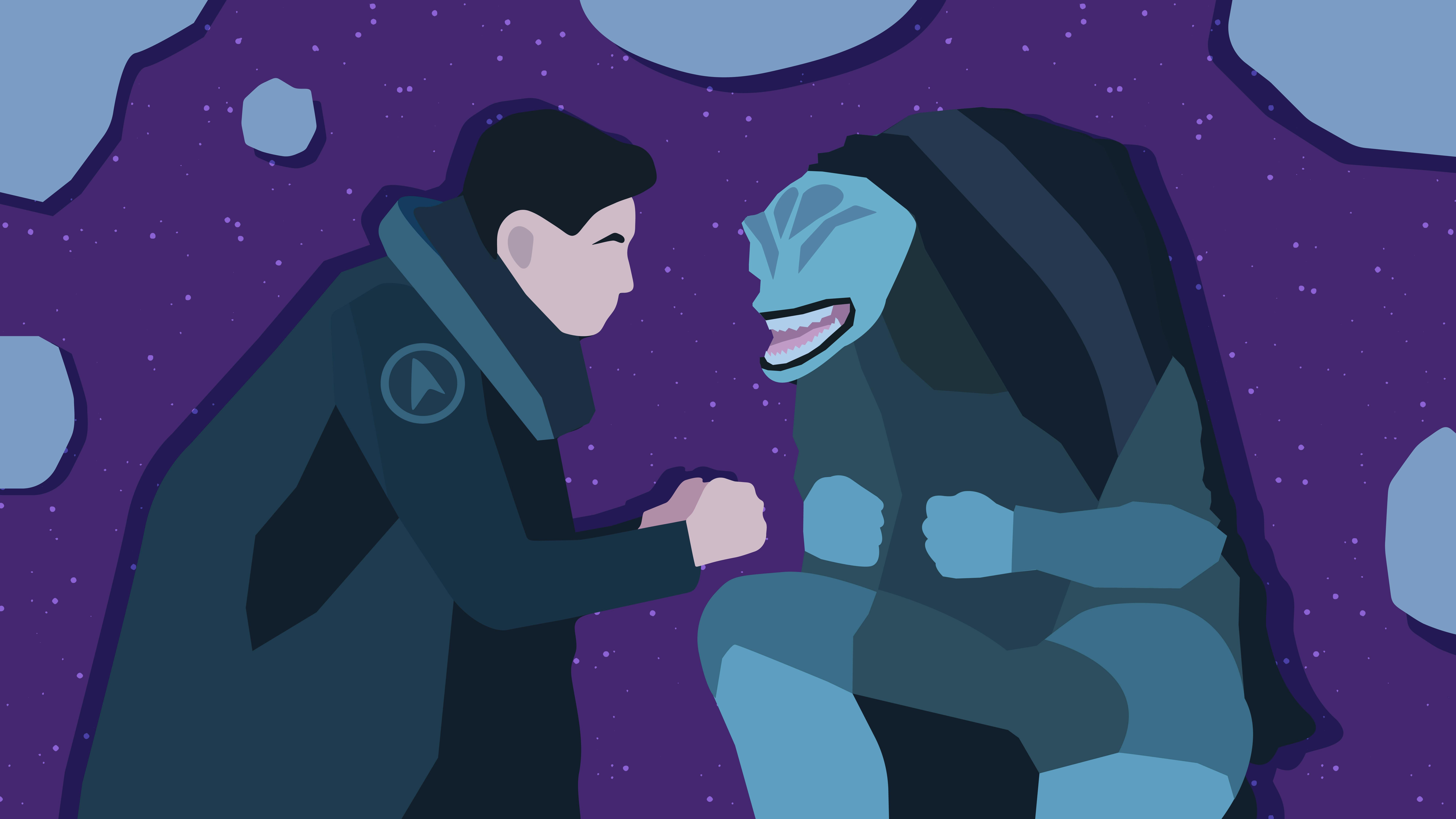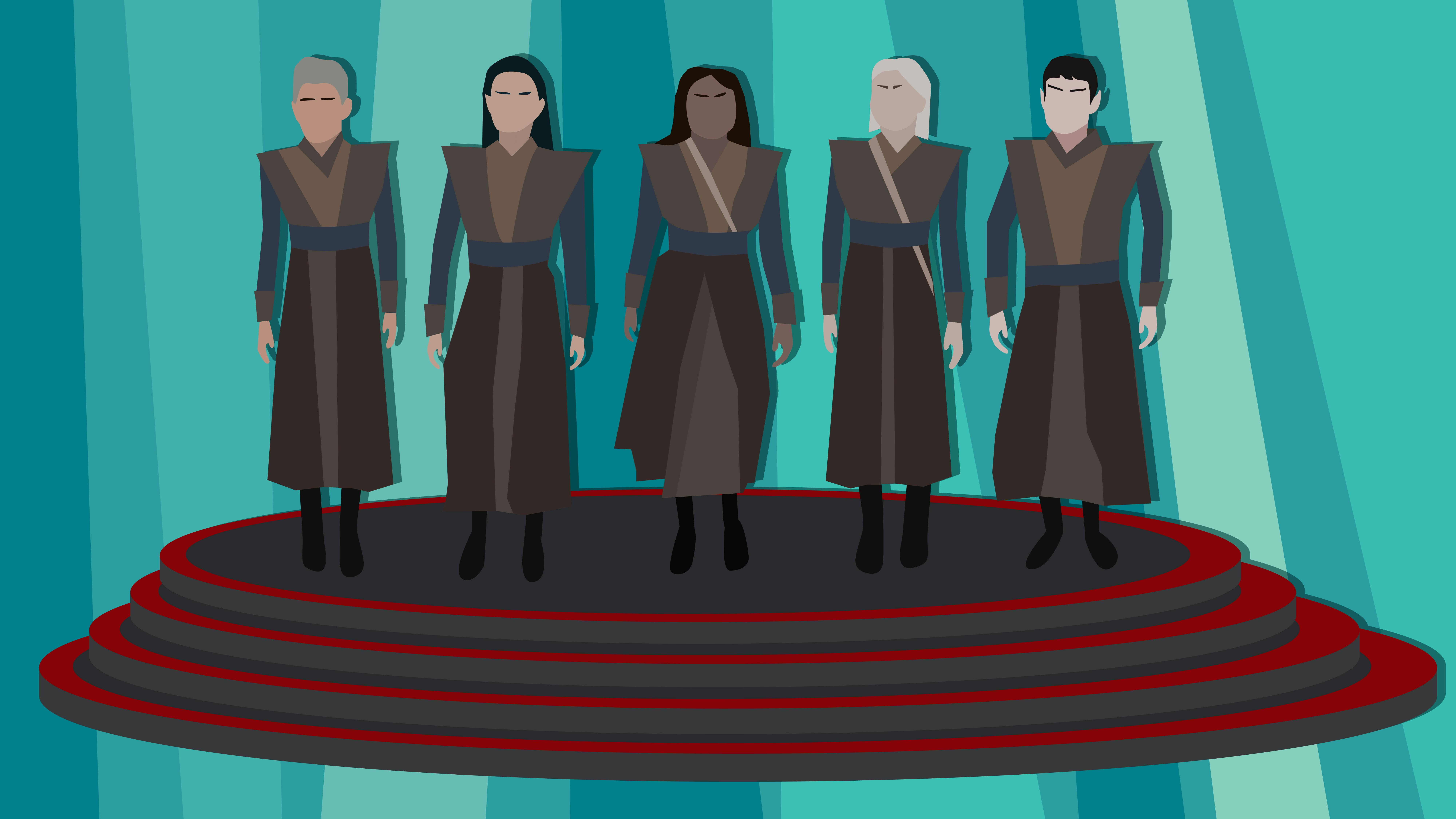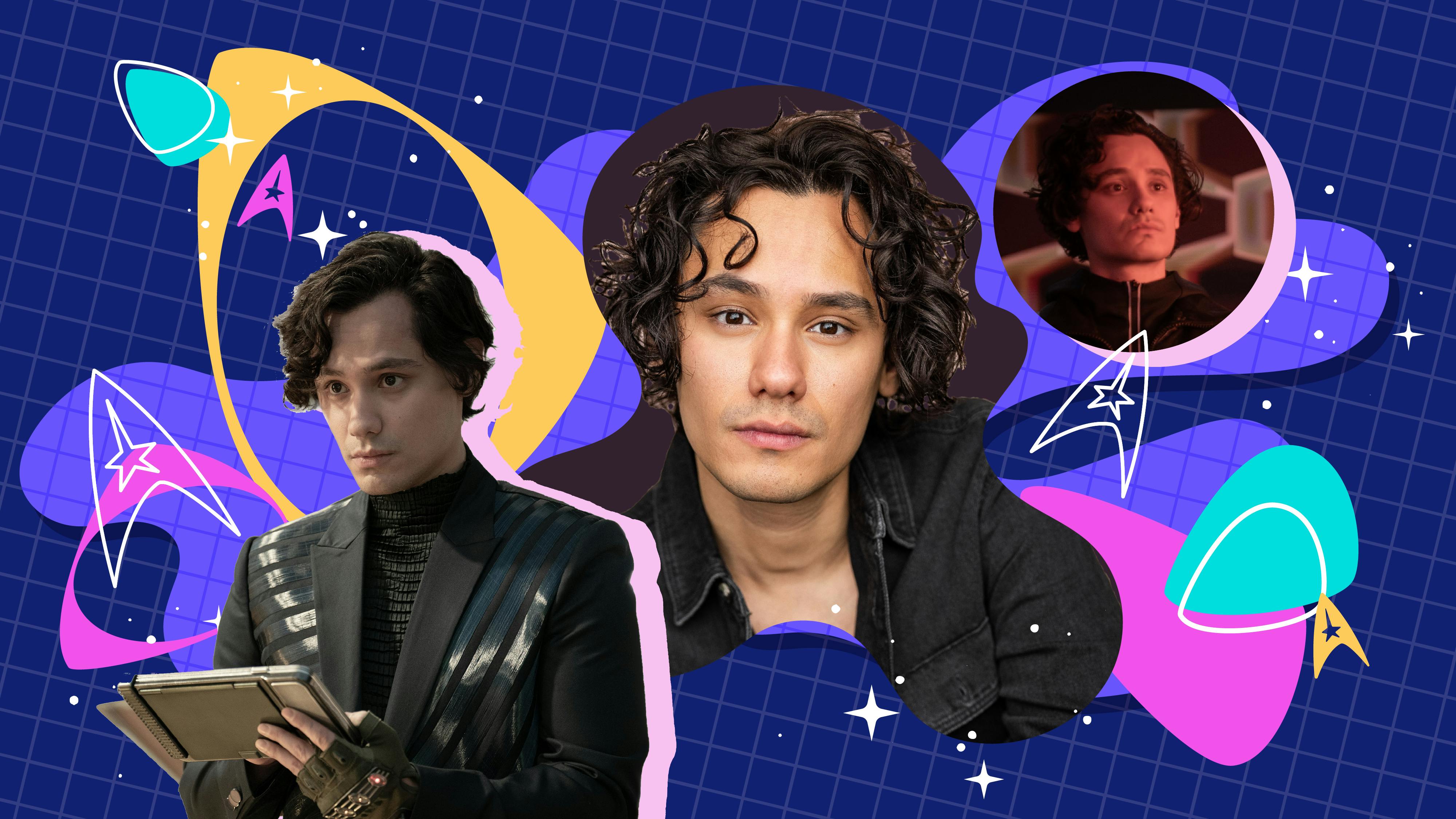Published Oct 9, 2017
Neville Page Talks Discovery's Creatures, Props & More
Neville Page Talks Discovery's Creatures, Props & More
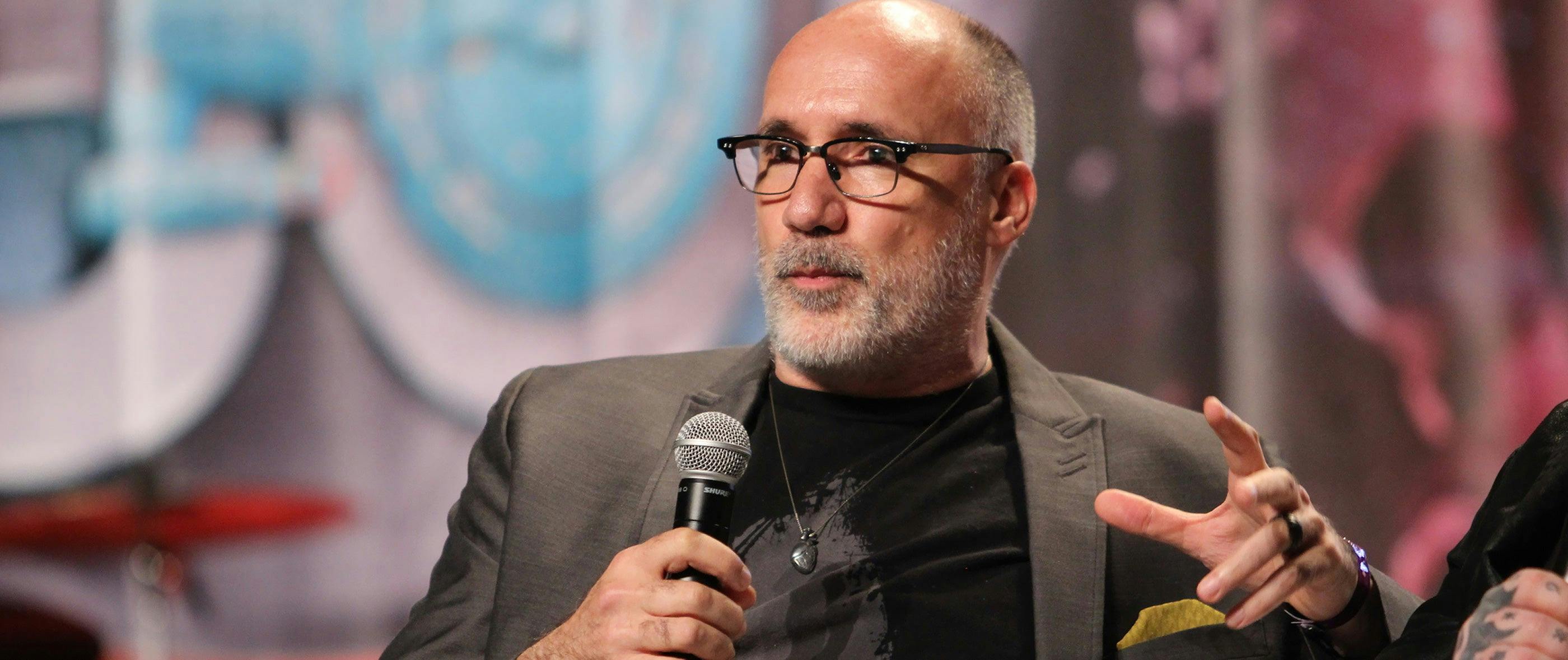
Neville Page is one of the few behind-the-scenes talents making the leap from the recent trio of Star Trek features to Star Trek: Discovery. But it sure makes sense. Page is a master creature and concept designer who plied his craft on Star Trek (2009) and Star Trek Into Darkness, as well as, to a lesser extent, Star Trek Beyond. His many non-Trek projects include such films as Planet of the Apes (Tim Burton version), Minority Report, Cloverfield, Avatar, Tron: Legacy, Super 8, Prometheus and Oblivion, as well as the shows Terra Nova and Falling Skies. When Discovery started to fall into place, executive producer/co-creator Alex Kurtzman brought Page in for meetings with co-creator and then-showrunner Bryan Fuller, and that led to Page joining forces with Glenn Hetrick and Hetrick’s Alchemy Studios, to create the Klingons. And that, in turn, paved the way to additional work on the show, as Page helped design/craft the Klingon props, then many other elements for Discovery, including the look of Saru (Doug Jones), the Klingon and masks, and more.
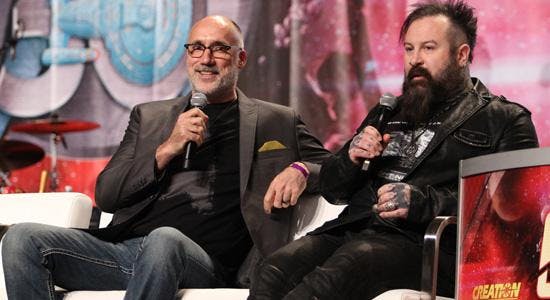
StarTrek.com had the chance to sit down with Page for an extensive conversation following his panel appearance with Hetrick at Star Trek Las Vegas, during which, for the first time, fans got to see images of the Klingon designs, and learn of the Discovery team’s affection for Trek and their desire to create something exciting and impactful when it comes to the Klingons. In addition, the production’s efforts were showcased in a Discovery Exhibit that featured costumes, props, masks and more, all shipped straight from the show’s set in Toronto. Page had visited the exhibit and interacted with fans there before settling in to speak with us. Here are excerpts from our conversation:
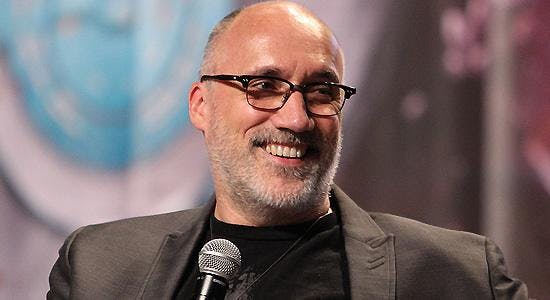
What's it like to see a crowd in a half-hour line to get in to see things you designed?
The thing that's so different about this convention versus other conventions, namely San Diego Comic-Con and Monsterpalooza, is those conventions have multiple franchises and interests. Here, it's myopically focused on Star Trek. Everyone has their favorite, Next Generationversus The Original Series, etc., and we, of course, have Discovery, but the one thing that’s universally consistent, and I'm only learning this by being here now, is the depth, level and importance of what these shows are and what they mean to people. In having conversations with the fans I've realized this is a dedicated audience that loves it and enjoys the ride, and really pays attention to every detail. I knew that going into it, really, and I've always conducted myself to design things so that they are meaningful, and thank goodness because now I realize it's very relevant with Trek. For a lot of people, Trek is a mirror for their lives. It's a place to live and experience certain things through their lives and through the characters’ lives. Having worked in the medical field, which I did for many years, I've worked with a lot of people with disabilities (and designed wheelchairs for them). There's a lot of fans who have disabilities. The demographic is very broad with the Trek fan base, but I've realized that when we're creating something for them it isn't just a passing fancy, or an amusement for that moment and then they go onto the next blockbuster, onto the next TV series. For Trek fans, it’s all super-relevant. That's where, again, I go back to I'm glad we put the effort in at the beginning.
What is the payoff?
The payoff is they get it. Everyone's resistant to change and new things, of course, and I get that, as am I, but the payoff is now seeing everyone react to what we’ve done. Glenn and I, when we did our panel, I went into it with trepidation knowing there are the Klingon fans of the traditional aesthetic, the traditional appearance, and here we are bringing up stuff that's way different. Then, when we were starting to explain things, you could see in the audience of almost 6,000 people that they were thinking, “Oh, so you did think it through,” because the assumption, which is OK, is you just did whatever for yourselves. No, we thought it through and it is all done with love and respect for the fans and the franchise.
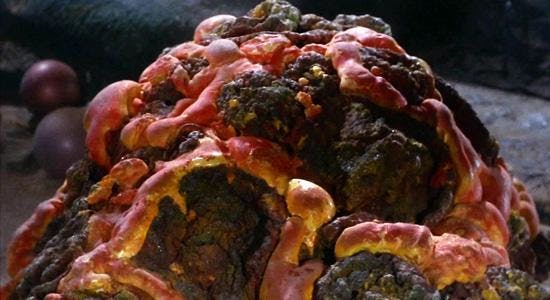
How big a Trek fan were you growing up, and did you have favorite Trek creatures?
I started watching repeats of TOS when I was seven or eight. I was a fan, but I wasn't a Trekkie by any means. I'm always scared to say that, because it feels like I should be fanatical. Glenn Hettrick, he's fanatical. He should be out there in the audience, bouncing up in a chair, clapping, because he knows it so well, thank God. I've always loved and appreciated Trek, but the show was not the end all, be all for me. But one of the Trek creatures gave me nightmares. It's the one that was like a giant rock that crushed people.
The Horta.
Thank you. It's embarrassing; I should know that. I have vivid memories of the nightmares I had because of that particular creature.
How did you wind up playing a Romulan in Star Trek (2009)?
I was working with Joel Harlow. The project started off with me just doing a creature work, then it turned into, “We need you guys now to start doing some Romulan stuff.” I was like, "Oh, cool. I get to work a little longer." Joel and I were in charge of Romulans, and we held hands all the way through. For Nero, we had this idea of doing a cool, scarred face, and one of his pointy ears is clipped off. We met with Eric Bana, who’s a wonderful actor, a real sweetheart, but he said, "I don't know about wearing a giant scleral lens in my eye. I'm not so sure about shaving my head." He had a beautiful head of hair. It was going to a lot of prosthetics. Eric jokingly said, "Why don't you do it?" I thought to myself, "You know what? It’d only be fair. If I'm asking actors to go through the rigors of wearing full prosthetics, and particularly the scleral lenses..." I can't stand lenses. They freak me out.
So you gave it a try?
I thought, "I can't demand that of somebody if I can't do it or haven't experienced it." Eric and I have similar proportions. Joel said, "Well, let's do a test on you, Neville, and then we can show J.J. what it looks like." We did the test, walked out, showed J.J. He didn't even know it was me. He was looking at it going, "This is cool. I like the idea. I get the Romulan, but it's a bit too much for Nero. It's a bit too on-the-nose bad-guy scars, but it's a great makeup. Why don't you be a Romulan, Neville, in this makeup." I was like, "Why not?" I thought to myself, "This is such a classic, unfair Hollywood story of how many actors would die to be in my position. I was given the role and I didn't even work for it."
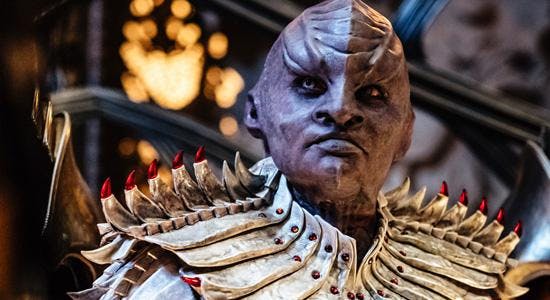
Talk about creating Mary Chieffo’s makeup for Discovery…
We knew we had a female Klingon. We didn't know who it was going to be. So, I just designed a generic female Klingon that Bryan would approve and say, “That's what they would look like.” Clearly, depending on who you cast, that person is going to alter the aesthetic. When Mary was cast, she had such a specific look that it was quite a rework of trying to get her features to work with the generic female face. What is really interesting is I'd met Mary the day she came in for a life cast. I wanted to meet her and see her face in person. I wanted to talk about her comfort and just get a general feel. At the time, I don't think there was a script for her. There was no conversation about, “Who’s your character? What are you going to be over the course of the story?” There was nothing coming from production, either. We didn't get to talk about much. Then, I started seeing dailies of her and, basically, thought, “OK, that's how it translated.” And then there was an opportunity to revisit her whole look. We also had the opportunity, quite frankly, to modify and adjust the whole look a bit, so that it was more comfortable for her, because it was one of the first Klingons we had done as a makeup.

Did Mary have notes?
She had some notes about, “Is there any chance we could make it a bit lighter at the back?” So, with all that input, we revisited it. Then, she had come to L.A. from Toronto. We were discussing her Klingon, because I knew she didn't know all the details yet. None of the Klingons knew. It was designed that way for Bryan. We had those conversations in depth. So, production knew, but none of the actors knew. It’s not like I can call up production and say, “Can you set up a Skype call with me and all of your Klingons, so I can let them know?” It doesn't work that way. Mary was a golden opportunity, really, to walk her through all the features of the Klingon head.
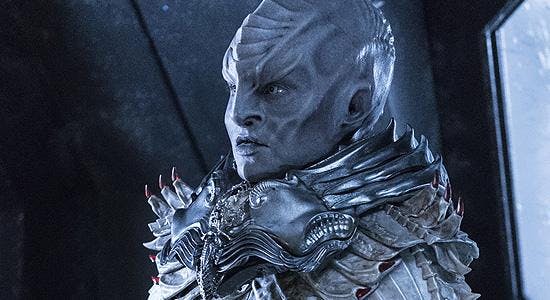
What are your specific responsibilities on Discovery?
It began with Klingons and Klingon world building. It was not initially the 24 houses. It was not initially that big a world. It started with the Klingons and Sarcophagus ship. We spoke of the houses, but that's down the road. Once we got the morphology of the Klingons figured out, then how we manipulate those into the other houses would unveil as needed. It is a budgetary thing. Any house has a price tag in development. But because of my interest in costume design, and coming from Tron, Oblivion and a few other films, I felt this is a great opportunity to utilize all these technologies we've used on some films, but haven't used in this capacity of 3D modeling and 3D printing. So, I came in, guns a-blazing, with Bryan, Aaron Harberts and Gretchen Berg. I had literally a bag of 3D printed parts and some images of Klingon armor with our new Klingon designs and said, “If you don't use me, you still have to use this technology because it will yield stuff we've not seen in very many major films and we've never seen on a television budget.” So, they got all excited. I was slated to do Klingons and a special spacesuit, and the probability of other alien lifeforms. We’ve still got three episodes, four episodes yet to film. So, there might be a few others. There's some classic ones coming back.
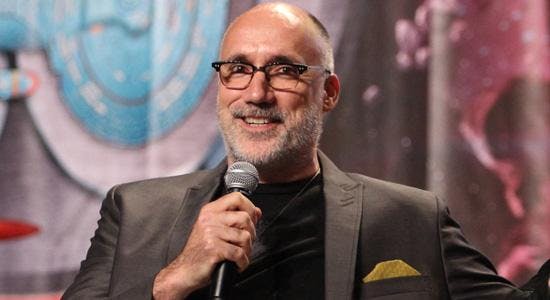
Most people think of you as the "creature guy," but you also design and build props. How different a mindset is it to create a prop or are they complementary?
I've always felt design is design. Obviously, if I was hired to design a futuristic car, I'm going to stumble my way to an end result and I can't guarantee you that the end result will be great. It'll be certainly a car, but that's not what I do. There's certain things you’re familiar with. Doing creatures, I've spent enough time studying animals and biology and physiology. Then, in terms of suits, armor in particular, it's not as if I knew what French and Spanish armor looked like, so that I could sit and start to draw it, paying attention to functionality and all those things. But the process is always the same. You do the research, you understand the market, you understand the most important thing, and that is the character and its narrative arc and, most important of all, which is where my acting experience has been so valuable to all of this, creatures, suits, etc., and that is, “What is the motivation?” Rather than just design a creature that looks cool and that, no matter what, it has to be that, I find that when you start to detail and infuse it with unique elements, hopefully, if you come from the perspective of why it does what it does, what its motivation is.
What an actor does as well with a script, it describes the moment and how you're going to move forward. An actor will do their research and help come up with a backstory. They will talk to costume about, “Give me a pocket watch, because my character actually is always nervous about time.” The actor builds a much richer character. That's their job. Same with creature design or costume design in the capacity that I do it. I always think of what is the motivation, what's the history, and whether people know about this or not, is somewhat irrelevant because you'll feel there's a depth to the character. It feels resolved and it feels more complex in an appropriate way.

